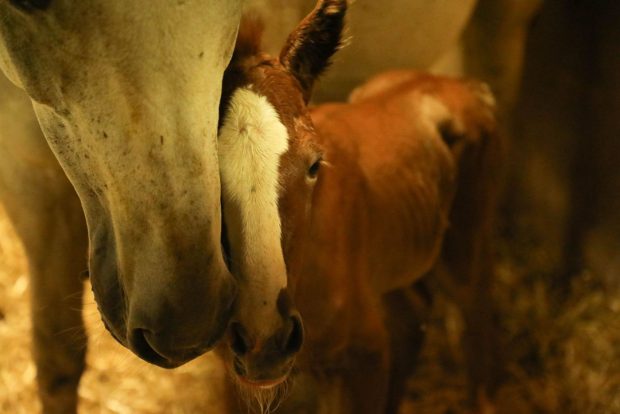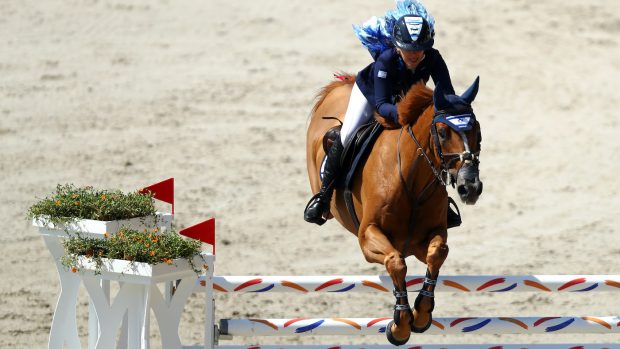OPINION
Today I visited the Westfalian state stud in Warendorf, Germany. The main courtyard, complete with its statue of the legendary stallion Paradox (the first to sire a horse that won over 1m German marks in competition) is pictured.
It is the second biggest such stud in Germany, behind Celle. Unlike anything in the UK, these studs are heavily subsidised by the government. Though the Westfalian warmblood society (one of a number of such studbooks in Germany) has hefty fees for breeders (around €500 a year) compared with British studbooks, the service their society provides is truly exceptional.
The stud was formed in the days before the internet and catalogues, and served as a breeding hub pre-artificial insemination (AI). But rather than being left behind in the wake of new methods, it continues to thrive.
It’s one of a number of German state studs and the underpinning philosophy has always been to offer German breeders the chance to use the best stallions available at an affordable price.
Founded in 1826 and currently housing about 130 stallions (down from the pre-World War II peak of 350), the Warendorf site also plays host to a 60-strong yard of schoolmaster horses where German hopefuls come to train to be professional riders.
Wandering around the clean, airy, vaulted barns, there’s an over-arching sense of peace, and horse after horse is lying flat out. Admittedly, they have had a stallion parade the previous day (around 7,000 visitors flock to see the performances. Can you imagine that many people at our Hartpury or Addington parades?), but they seem contented rather than knackered.
And I loved their door handles, which are in the shape of the society’s brand (pictured).
Service with a smile
Such is the service to mare owners that the stud even sends representatives out to breeders to help critically assess the mare populations and decide what sort of stallions would best complement the mares in that area. This was of course more relevant in pre-AI days, but is still an extremely valuable tool. The stud then dispatches suitable sires to those areas to stand locally for the duration of the breeding season. This is reassessed each and every year. That’s some service.
Admittedly, in Britain we can capitalise on the carefully crafted bloodlines that most of the German state stallions represent (though only those whose semen is approved for international shipping) via AI. That does mean British breeders are often using continental stallions never having seen them in the flesh — the expense for a single mare owner to make the trip over to visit a prospective sire is an unfeasible option in most cases.
What certainly isn’t on-hand for British breeders is ready expert help to critically assess mares with the aim of improving future stallion choices. Perhaps this could be a new element included in the Futurity to make breeders’ choices better informed? Or if that’s too much to ask given the plethora of stallions available world-wide, then maybe a simple (3-point?) checklist of what to particularly look out for when choosing a suitable stallion for said mare. It’s an embryonic idea and mightn’t have legs in this exact form, but surely something along these lines can only be good for British breeders? Given that breeding’s always part lottery, any measures to improve the odds should be welcomed.
Tradition, culture AND tourism
It’s not just warmbloods catered for at the state stud. One whole barn is chock full of the most majestic draft horses I’ve ever seen. It’s the largest collection of these heavy stallions in the world and these serene, chunky beauties are still used for breeding to produce horses to work in agriculture.
It would be fabulous to see the powers that be in Britain protecting the nation’s rare breeds in such a way. It’s not just quaint tradition that drives this; it would also bring in wads of cash as a tourist attraction. Almost all of Germany’s state studs are now geared to making money from tourism; Warendorf is one of the few where the focus (and income) is still strongly skewed towards breeding.
Double-edged sword?
I’m not entirely sure whether I’m just pleased for the future of competitive sport horse breeding having seen this amazing place (it’s absolutely gorgeous with old, well kept buildings and sensational facilities) and its robust and effective system — propped up by the state in Germany (other systems are available) — or depressed that initiatives like this are not forthcoming in the UK and seem to be well out of reach.
Much food for thought…





